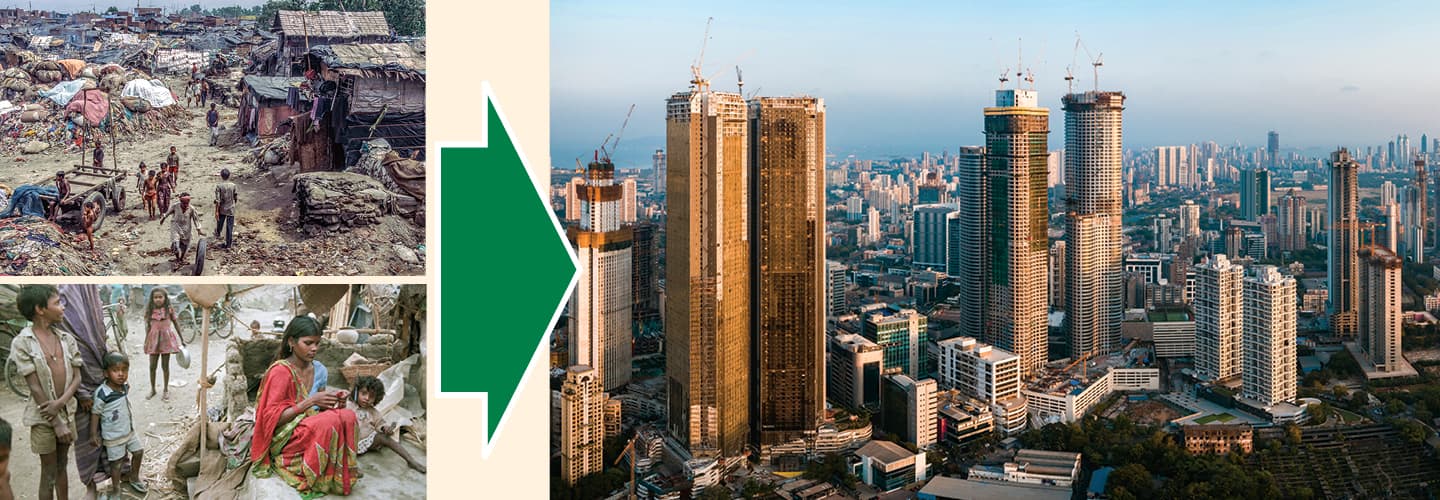Imagine living with your family in a one-room hut with a dirt floor. There’s a small open fire that burns wood or cow dung to provide heat, light, and a place to cook. When you need water, you have to lug it in from a stream or a well some distance away. There’s no electricity and no toilet—just a pit outside. You spend most of your time working in a field to grow the food your family needs to keep hunger at bay.
You might go to school, but your family can’t afford the books, paper, and pencils you need. If you get sick, there’s no money for medicine. Refrigerators and cellphones are unimaginable luxuries.
This is what extreme poverty—defined by the World Bank as living on less than $1.90 a day—often looks like today in many parts of the globe. But the good news is that economists say the world has made great progress in the past three decades toward eliminating it. In 1990, about 36 percent of people worldwide—and nearly half of all people in developing countries—lived in extreme poverty. By 2017, the most recent year for which data is available, about 9 percent of the world’s people did.
Imagine living with your family in a one-room hut with a dirt floor. There’s a small open fire that burns wood or manure to provide heat, light, and a place to cook. When you need water, you have to carry it in from a stream or a well some distance away. There’s no electricity. And instead of a toilet, there’s a pit outside. You spend most of your time working in a field to grow the food your family needs to prevent hunger.
You might go to school, but your family can’t afford the books, paper, and pencils you need. If you get sick, there’s no money for medicine. Refrigerators and cellphones are rare luxuries.
This is what extreme poverty often looks like today in many parts of the globe. The World Bank defines this level of poverty as living on less than $1.90 a day.
But the good news is that economists say the world has made great progress in the past three decades toward ending it. In 1990, about 36 percent of people worldwide lived in extreme poverty. Nearly half of all people in developing countries lived in extreme poverty. By 2017, the most recent year for which data is available, about 9 percent of the world’s people lived in this kind of poverty.

